You might have noticed that I’ve neglected the blog for quite a few months 😬 Sorry about that – I was engrossed in a venture that required all of my time and energy. But I’m working on a bunch of new recipes to share with you, and I’m super excited about this one featuring beautiful seared sea scallops and a fabulous sweet and sour grape topping. It’s deceptively simple, yet truly elegant and delicious; perfect for ending the year on a high note. If you’re looking for an easy and impressive New Year’s Eve meal, this is it! You can even make the relish ahead of time, so you’re literally only looking at a few minutes of cooking right before you sit down to eat.
A few years ago I went on a grape kick and I started exploring different ways to enjoy them beyond eating them fresh out of hand. If you’ve never had them roasted or pickled, you’re really missing out – those have become my two favorite ways to enjoy these little globes of deliciousness. Anyway I recently picked up a few perfect bunches and couldn’t decide whether to roast or pickle them, so I decided I should find a way to combine the two flavor profiles. After some experimenting in the kitchen I came up with a fabulous condiment that falls somewhere between agrodolce and mostarda (let’s call it a relish for lack of a better term). It’s sweet, sour, tangy, and savory, with herbaceous notes of fresh rosemary and thyme, and a whisper of heat from dried red pepper flakes.
How good does that look? And it’s not even cooked yet. Complex and beautifully balanced, it hits all the flavor points on your tongue. It deserves to be paired with a special protein, so I opted for seared sea scallops.
When I’m developing a recipe I like to build layers of texture as well as flavor, otherwise the eating experience can become a little monotonous. Getting a nice, hard sear on the scallops ensures that they’ll have a firm crust on the top and bottom to offset the tender center, and a smattering of buttery toasted hazelnuts provides some additional crunch. Contrasting temperatures also make a dish more interesting, so I like to serve the warm scallops and grapes over a bed of chilled winter lettuce, which lends a bitterness that complements the sweetness of the scallops. I recommend treviso, radicchio, or red endive, as the deep purple and pink hues look beautiful against a white plate and help amplify the color of the grapes. Just make sure that whatever variety you choose has a bitter note to it. The only garnish you need is a sprinkle of chopped fresh parsley – those vibrant flecks of green will really stand out – and a sprinkle of bright and tangy pomegranate seeds for one more burst of color and crunch. (And PS, if you’re into tradition and believe that eating certain foods on New Year’s will bring abundance and prosperity in the coming year, you’ve got triple the good karma coming your way with grapes, pomegranates, and seafood all packed into this dish. You’re welcome.)
Okay, ready to do some cooking? Fortunately this entire recipe only requires a single sauté pan with a lid, which I think is yet another reason to celebrate. Bear in mind that you’ll need to use stainless steel here – as much as I love cast iron for a guaranteed hard sear, it doesn’t play well with the acid in the sauce (and nonstick is a no-no for high heat searing).
The hazelnuts are up first. Once you’ve chopped them, toast them in the pan over medium heat until they’re golden and fragrant. I recommend shaking the pan or stirring the nuts frequently to make sure they toast evenly.
When they look perfectly toasty like these do, set them aside and wipe any leftover bits out of the pan.
Heat the olive oil over medium-high until it’s barely shimmering, and toss in the mustard seeds; they should sizzle when they hit the pan. Fry the seeds for about 30 seconds, then add the shallot or red onion, crushed red pepper flakes, and a pinch of salt. Sauté for about a minute until the shallot or onion begins to soften.
See how the shallot looks soft and a little translucent? Now add the remaining relish ingredients along with a scant quarter teaspoon of salt, and give it all a good stir. Bring it to a simmer, cover with a lid, and cook for 15-20 minutes, stirring occasionally. When the grapes are softened and beginning to break down, remove the lid, discard the herb sprigs, and stir in the butter to melt.
Sexy, right? Transfer the relish to a serving dish and set aside. (If you’re making this component ahead of time, transfer to a jar and refrigerate until ready to use. Reheat it on the stove or in the microwave before serving.)
Give the skillet a quick rinse and wipe, and you’re ready to sear those scallops. Be sure to pat them completely dry with a towel before seasoning them with a generous sprinkle of salt and pepper on the tops and bottoms. Set the pan over high heat and add a tablespoon of the neutral oil, swirling to coat. When the oil is shimmering, add a drop of water to test the temperature – if it sizzles violently as it hits the pan, you’re ready to sear those scallops. Add half of the scallops in a single layer, being sure to leave at least an inch of space around each one so there’s sufficient room for moisture to evaporate (excess moisture will inhibit crust formation). Once the scallops are in the pan, don’t touch them for about 90 seconds so they have a chance to brown on the first side.
Keep an eye on the bottom edges, and when you see a deep golden brown crust has formed, add 1 tablespoon of butter, tilt the pan to swirl it around, then flip the scallops over. If they’re sticking a bit when you try to flip them it means the crust isn’t fully formed, so let them go for another 15-30 seconds or so.
See how the underside of that scallop is forming a nice brown crust? This baby is just about ready to flip…
Hello, gorgeous! That’s the kind of crust you’re looking for. Now that the first side is done, let the scallops cook on the second side for just about 60 seconds longer. The bottoms don’t have to get quite as browned and we really don’t want to overcook the scallops – the centers should be barely cooked through. If you lightly press or squeeze the sides of a scallop and it feels juuust firm to the touch but with a bit of give, it’s ready. Transfer the first batch of scallops to a holding platter, wipe out the skillet, and repeat the process with the second batch. Once those are cooked, it’s time to plate and eat.
Scatter a bed of the bitter lettuce onto the plates, and arrange several scallops on each one. Spoon the relish over the scallops, being sure to get some whole grapes and sauce on each plate. Sprinkle on the toasted nuts, chopped parsley, and pomegranate seeds.
Dig in, and have a safe and happy holiday!
- Hazelnuts and Relish:
- 27g (3 Tbsp) skinned hazelnuts, roughly chopped
- 20 ml (4 tsp) extra virgin olive oil
- 6g (2 tsp) yellow mustard seeds
- 21g (3 Tbsp) finely minced shallot or red onion
- ¼ tsp crushed red pepper flakes
- Kosher salt
- 1 tsp finely grated lemon zest
- 1 lb (3 cups) seedless red or purple grapes, halved
- 42g (2 Tbsp) honey
- 6 fl oz (¼ cup + 2 Tbsp) sherry vinegar
- 1 large sprig rosemary, washed and dried
- 2 sprigs thyme, washed and dried
- 14g (1 Tbsp) unsalted butter or dairy-free alternative
- Scallops:
- 1 lb large dry sea scallops, preferably at least U-12 size*
- Kosher salt
- Freshly ground black pepper
- 30 ml (2 Tbsp) neutral oil such as avocado or grape seed, divided
- 28g (2 Tbsp) unsalted butter or dairy-free alternative, divided
- For Serving:
- 12 oz bitter winter lettuce, chopped or torn into bite-size pieces
- 2 tsp finely chopped parsley
- 4 tsp pomegranate seeds
- Toast the hazelnuts: Set a large skillet over medium-low heat, and spread the chopped nuts along the bottom in a single layer. Toast the nuts, stirring with a spatula or shaking the pan frequently, until golden brown and aromatic. This will take 2-3 minutes. Set the nuts aside in a dish, and wipe out the skillet.
- Make the relish: With the burner set on medium-high, heat the extra virgin olive oil in the pan until shimmering. Add the mustard seeds, stir or toss to coat with oil, and fry for about 30 seconds. Add the minced shallot or onion, crushed red pepper flakes, and a pinch of salt. Sauté for about a minute, just until shallot or onion begins to soften. Add the lemon zest, grapes, honey, vinegar, rosemary, thyme, and a scant ¼ teaspoon of kosher salt. Stir to combine well, bring to a simmer, cover, and cook for about 15-20 minutes until grapes are softened and beginning to break down.
- Discard herb sprigs, stir in butter to melt, and transfer relish to a serving dish. (If making ahead of time, transfer to a jar and refrigerate. Reheat before serving.) Rinse and wipe out the skillet.
- Sear the scallops: Use a clean kitchen towel or paper towels to blot any moisture from all sides of the scallops, then season the tops and bottoms generously with salt and pepper.
- Set the pan over high heat and add a tablespoon of the neutral oil, swirling to coat. When the oil is shimmering and a drop of water sizzles violently as it hits the pan, add half the scallops in a single layer, being sure to leave at least an inch of space around each one. Once the scallops are in the pan don’t touch or move them for at least 90 seconds. Watch the bottom edges, and when a deep golden brown crust has formed add 1 tablespoon of butter to the pan, tilting and swirling to distribute. Carefully turn the scallops over - if they’re sticking and won’t release from the pan, let them cook for another 15 seconds, then flip them.
- Cook the scallops on the second side for about 60 seconds, until the bottoms are golden and the sides are barely firm when pressed. Transfer the first batch of scallops to a holding platter, wipe out the skillet, and repeat the process with the second batch.
- Serve: Scatter the lettuce onto serving plates, and place one fourth of the scallops on each plate. Spoon or drizzle sauce over the scallops, and garnish with toasted hazelnuts, chopped parsley, and pomegranate seeds. Serve immediately.
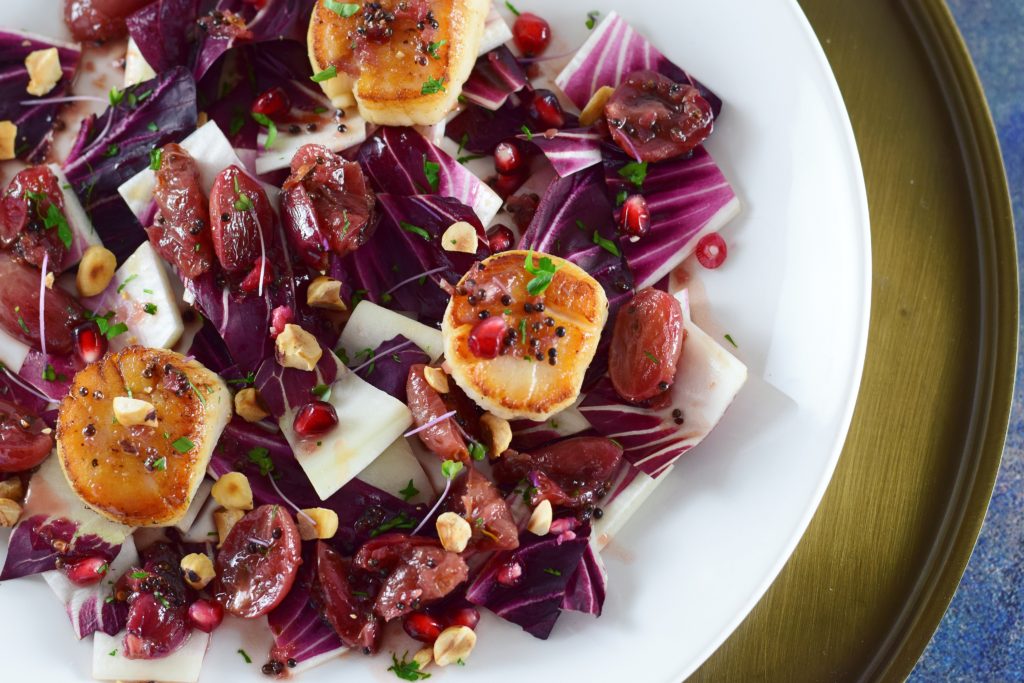

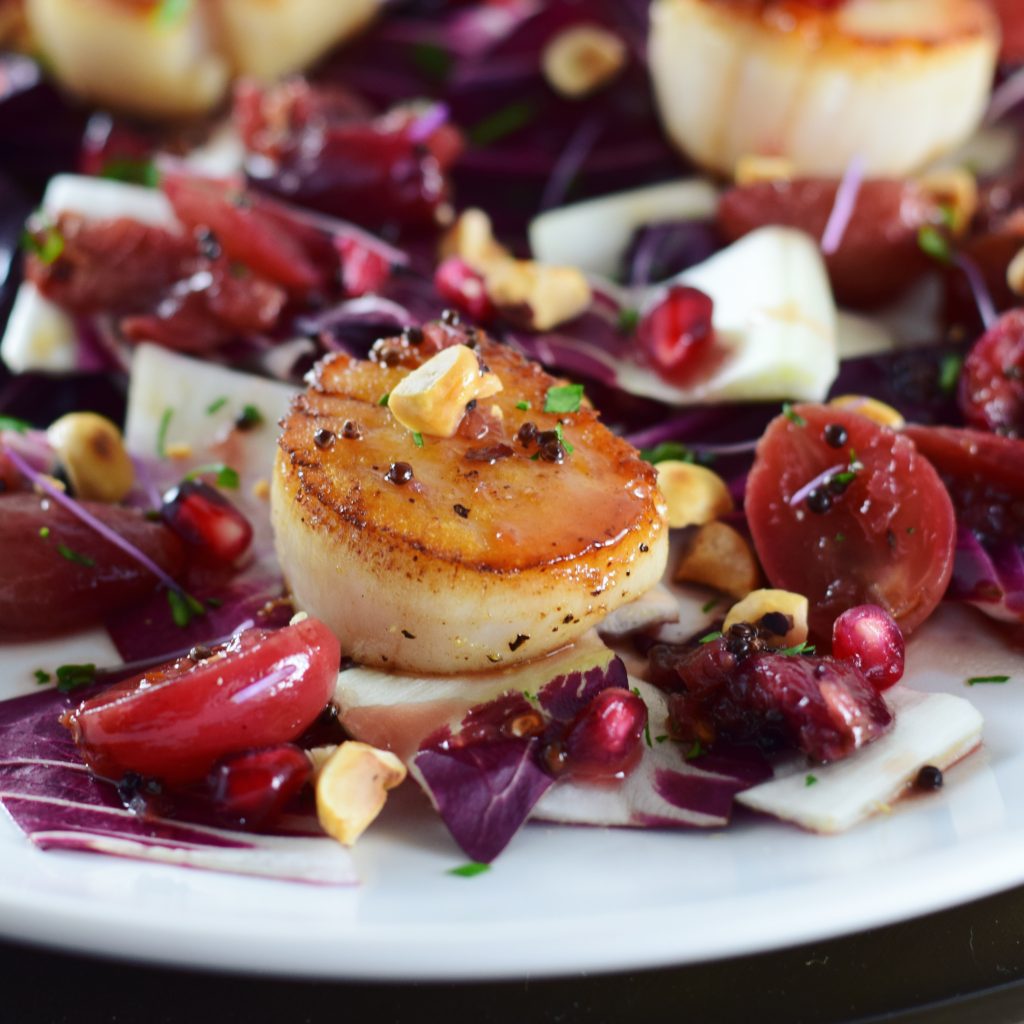
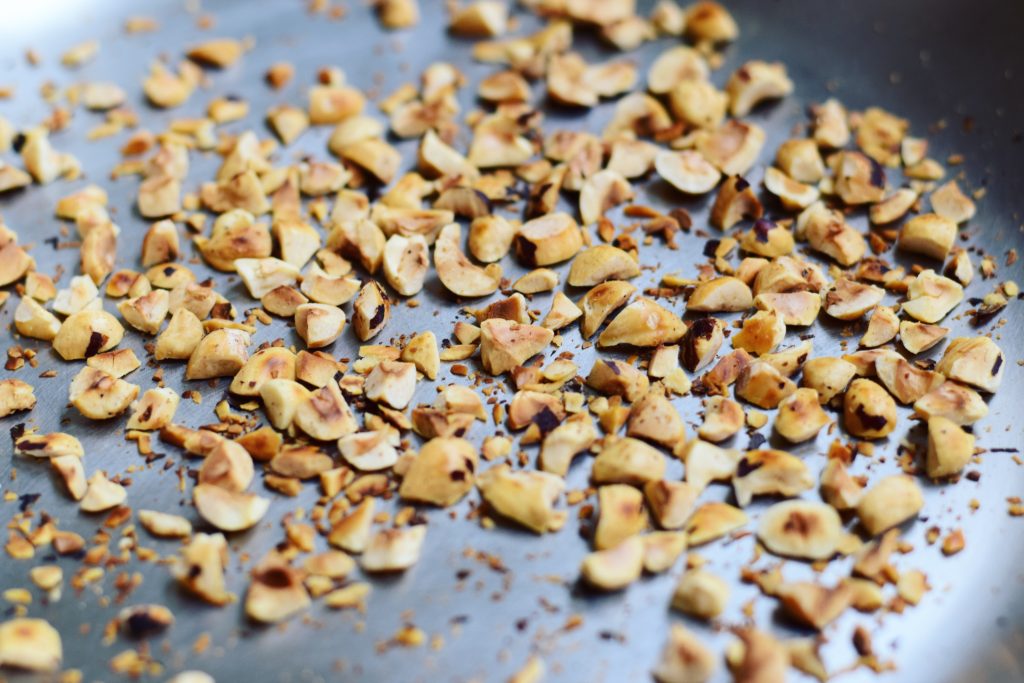
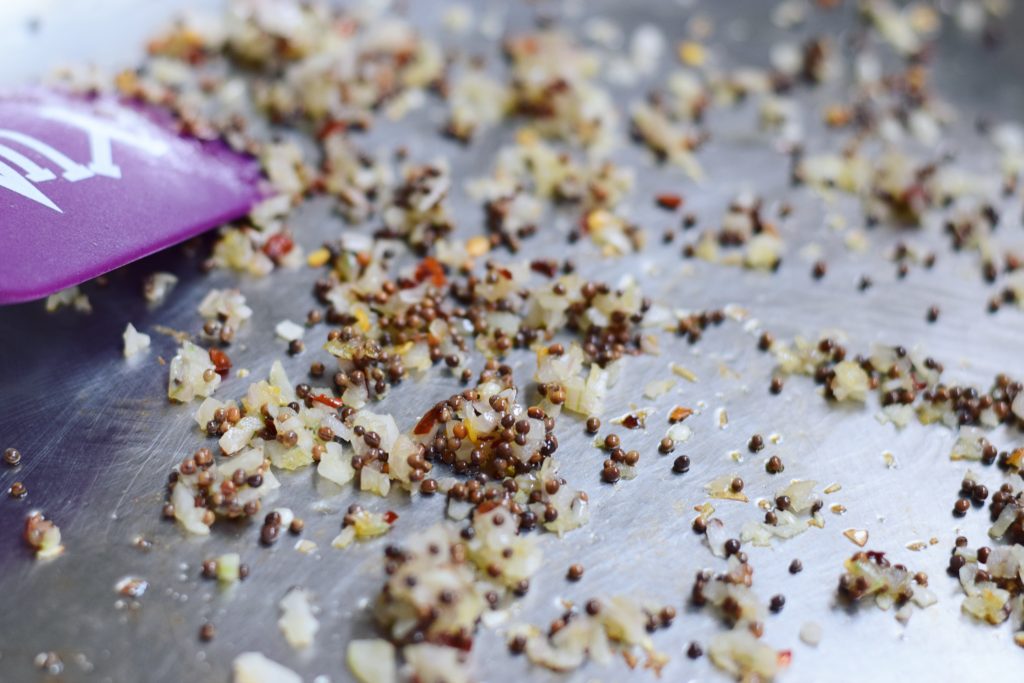

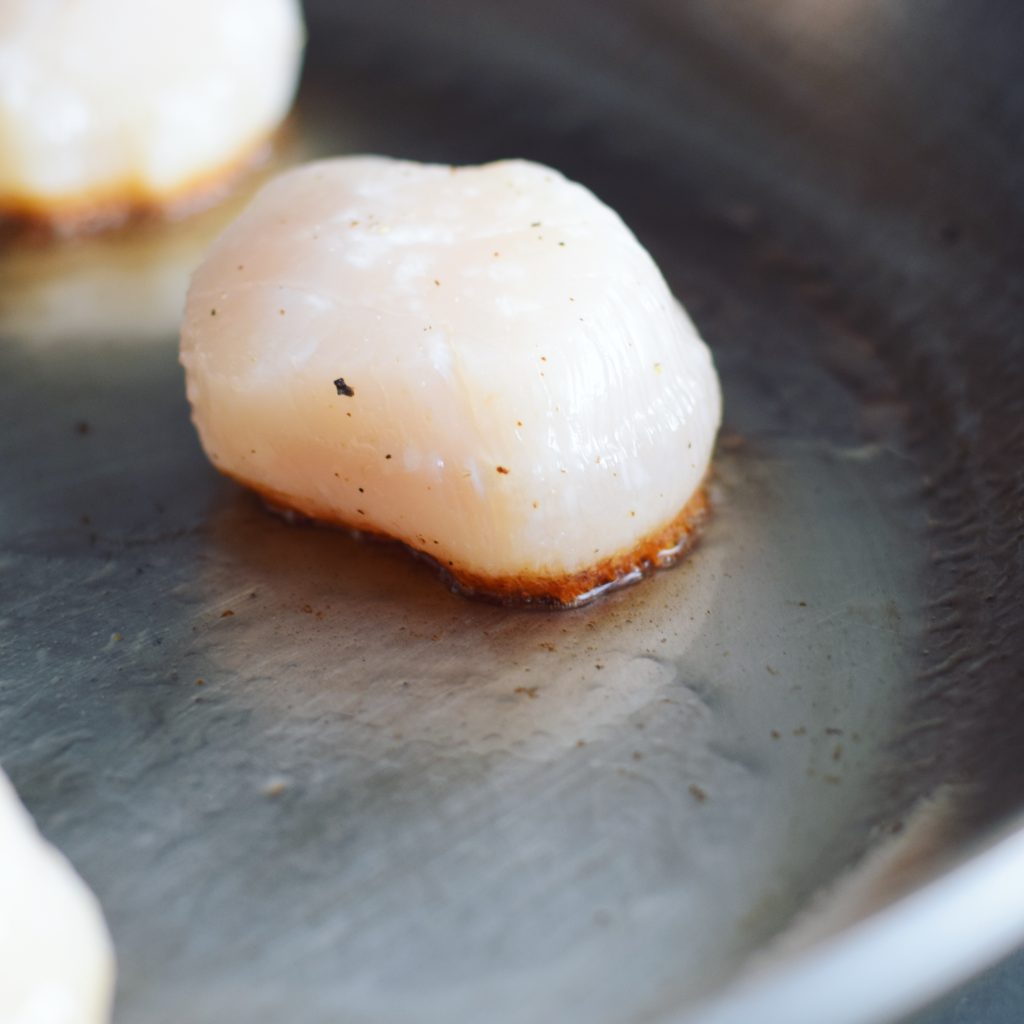
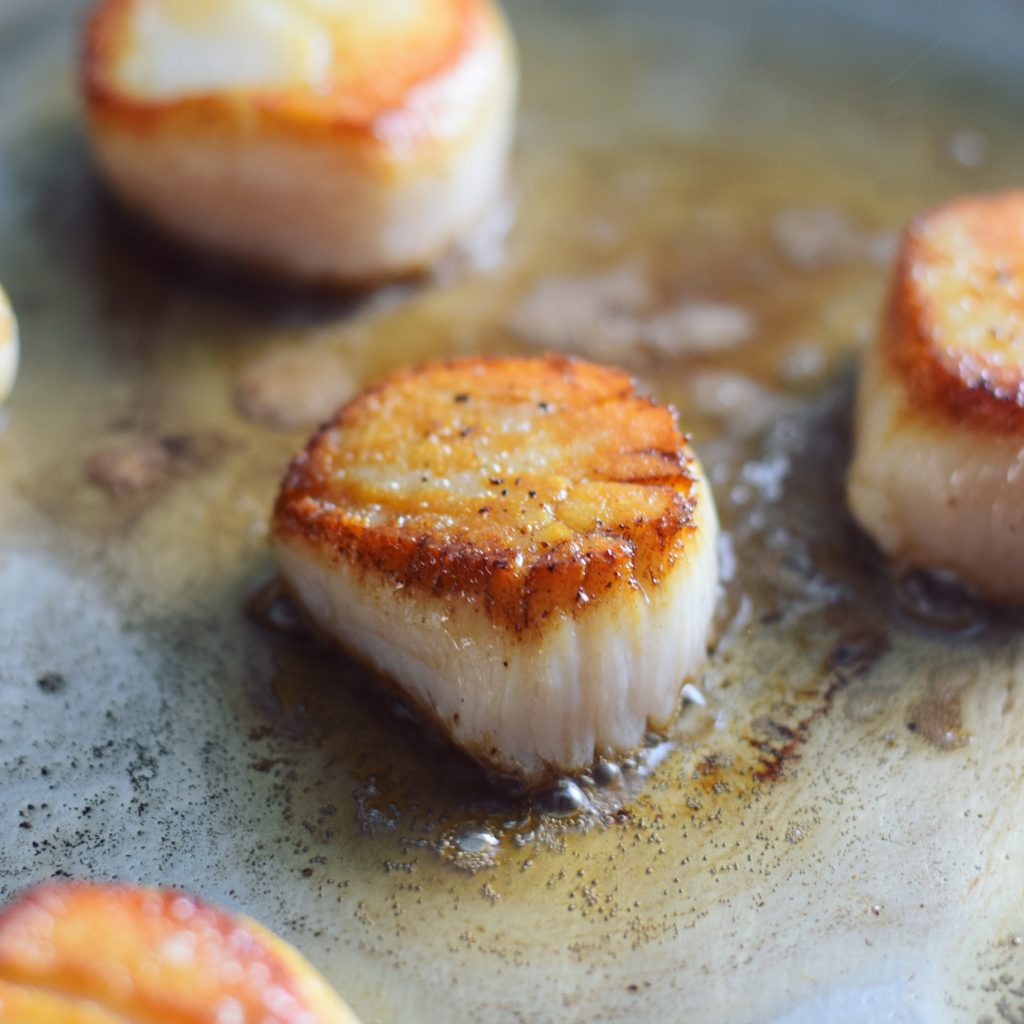
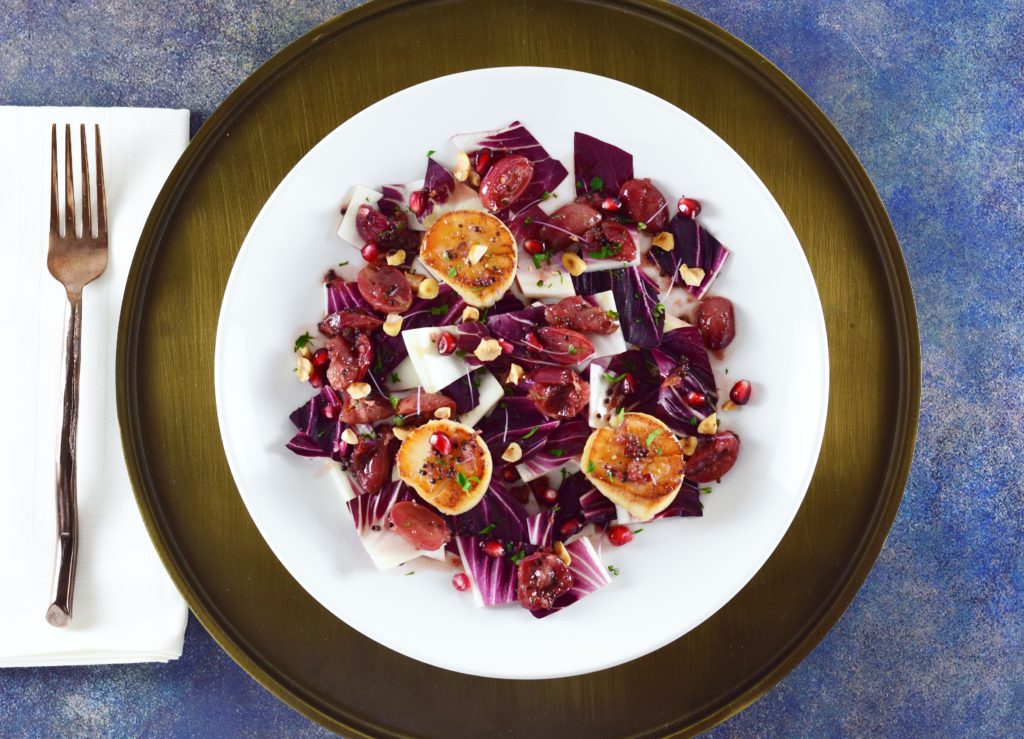
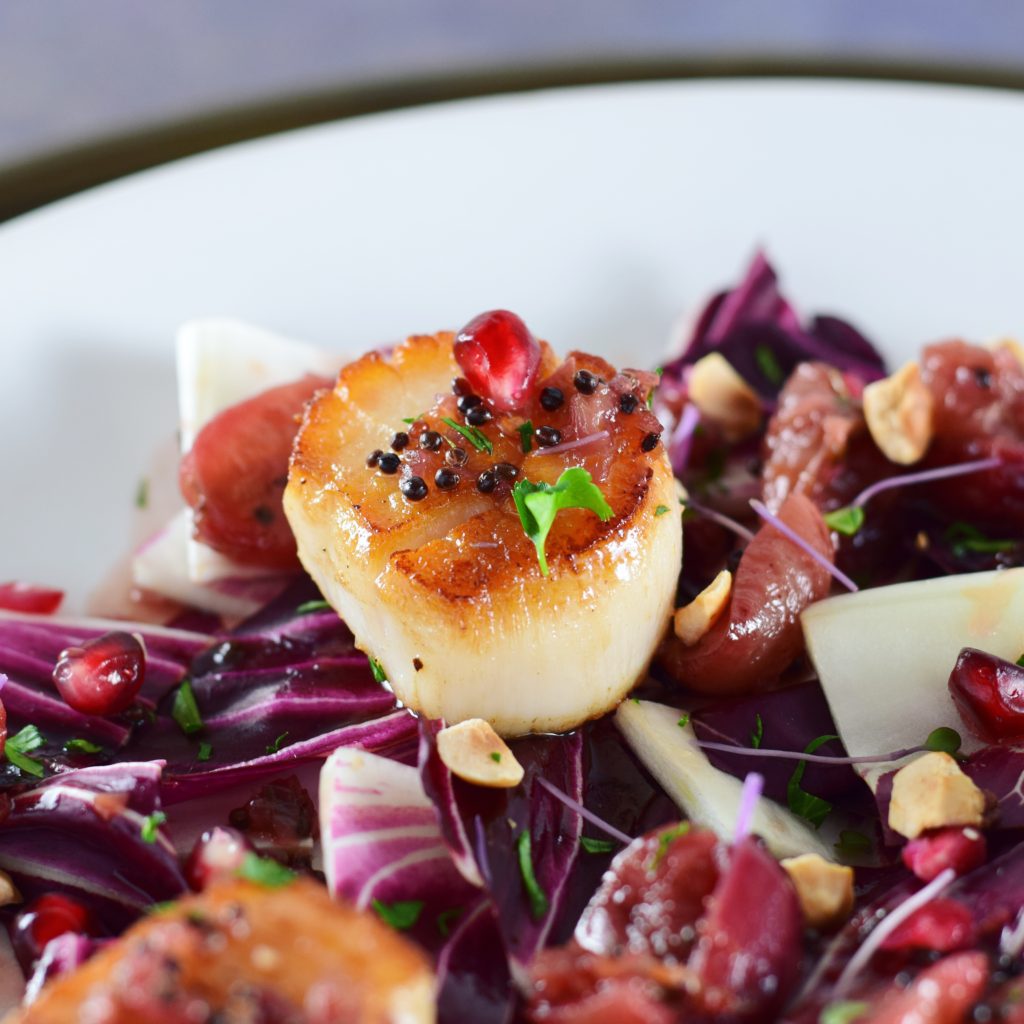
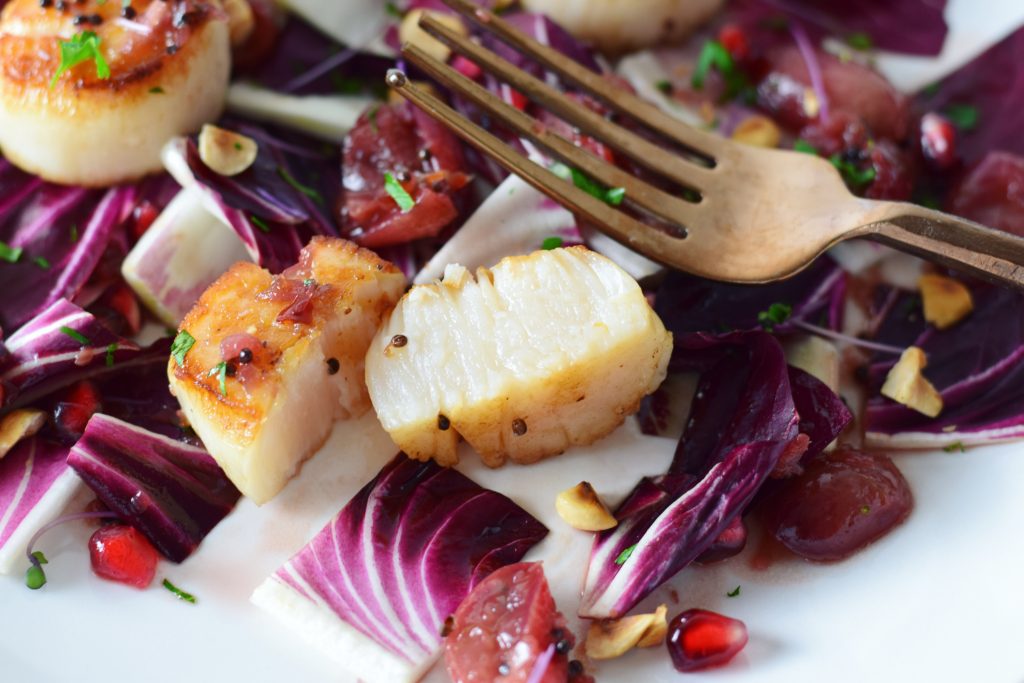
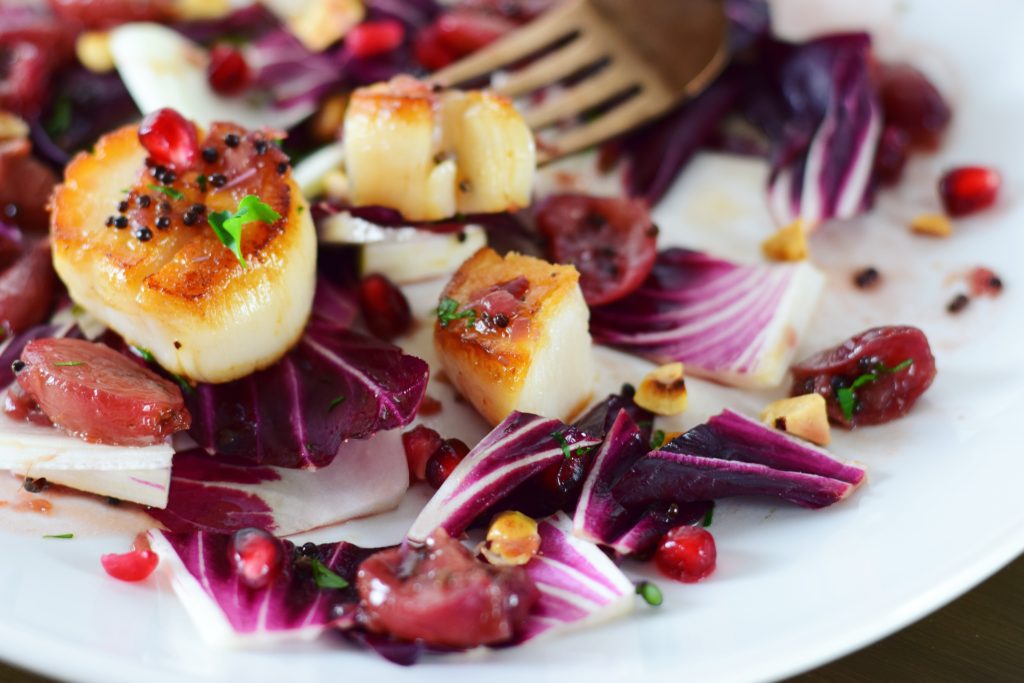


Leave a Reply